Is genital warts the same as hpv. Genital Warts and HPV: Understanding the Connection, Symptoms, and Treatment Options
What are the differences between genital warts and HPV. How are genital warts diagnosed and treated. Can genital warts be prevented. What are the long-term health implications of HPV infection.
The Relationship Between Genital Warts and HPV
Genital warts and HPV (Human Papillomavirus) are closely related but not exactly the same. HPV is the virus that causes genital warts, but not all HPV infections result in visible warts. Understanding this distinction is crucial for proper diagnosis and treatment.
HPV is the most common sexually transmitted infection in North America. While genital warts are a visible symptom of certain HPV strains, many people infected with HPV never develop warts. This means you can have HPV without having genital warts, but you can’t have genital warts without HPV.
Key Facts About HPV and Genital Warts
- HPV is a group of viruses, with over 100 different types identified
- Only certain HPV strains cause genital warts
- Some high-risk HPV types can lead to various cancers, including cervical, rectal, and penile cancer
- At least 50% of sexually active individuals will contract HPV at some point in their lives
- Genital warts may appear 1-3 months after HPV infection, but some people never develop visible symptoms
Identifying Genital Warts: Appearance and Symptoms
Recognizing genital warts is an important step in seeking appropriate medical care. These growths have distinct characteristics that set them apart from other skin conditions.

Visual Characteristics of Genital Warts
- Small, flesh-colored, pink, or red growths
- Often appear in clusters of three or four
- May resemble small cauliflower florets
- Can be tiny and difficult to see with the naked eye
- Typically found in or around the genital area
Do genital warts cause pain or discomfort? While genital warts are generally not painful, they may occasionally cause mild pain, bleeding, or itching. These symptoms can vary from person to person and may depend on the location and size of the warts.
Where Genital Warts Can Appear
In women, genital warts may develop:
- On the outside of the vagina
- Inside the vagina
- On the cervix
- Around the anus
In men, genital warts can appear:
- On the tip of the penis
- On the shaft of the penis
- On the scrotum
- Around the anus
Regardless of gender, genital warts can also develop in the mouth or throat of individuals who have engaged in oral sex with an infected partner.
Diagnosing Genital Warts and HPV Infection
Proper diagnosis of genital warts and HPV infection is crucial for effective treatment and management. Healthcare providers use various methods to confirm the presence of warts and determine if high-risk HPV strains are present.
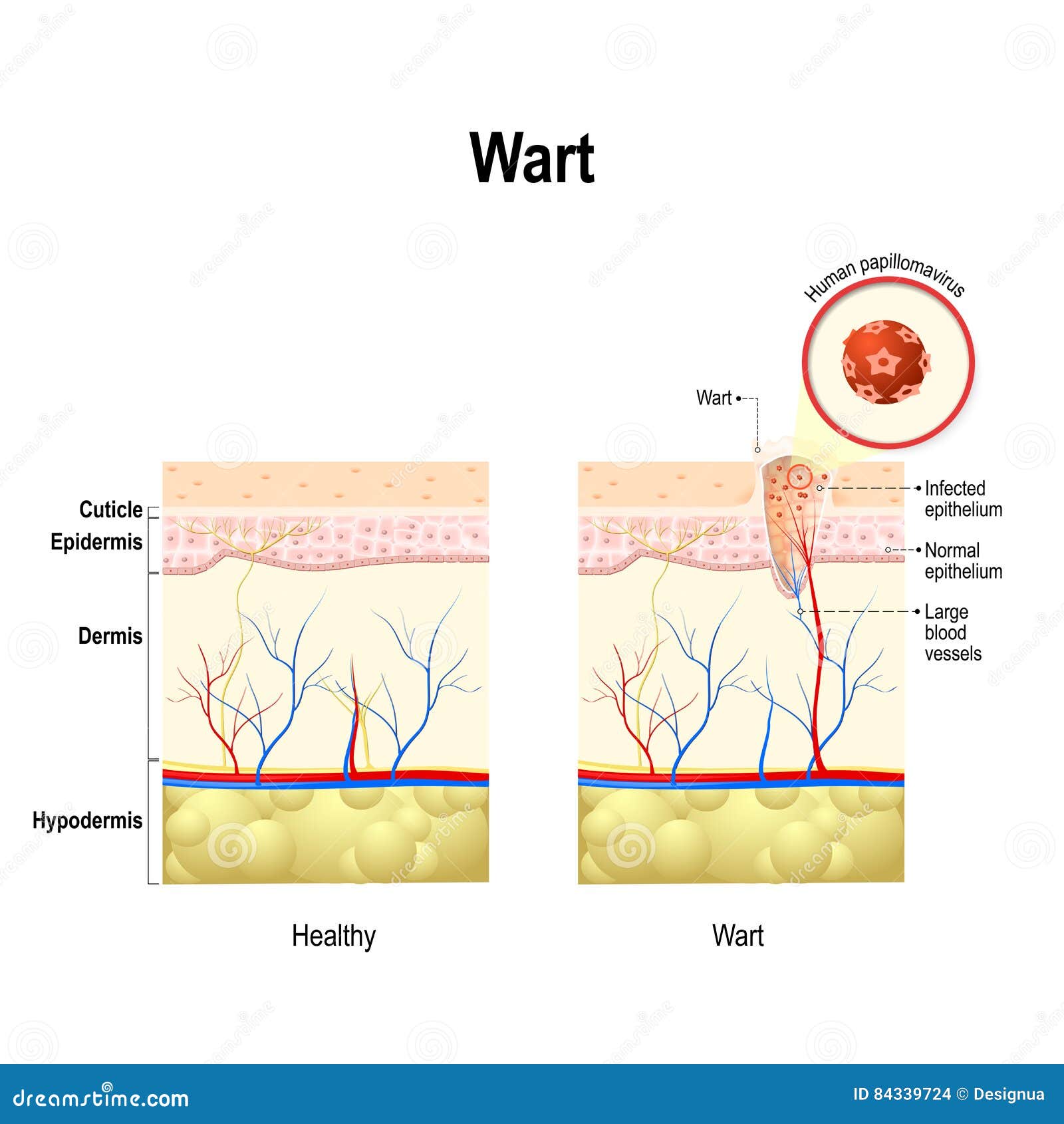
Common Diagnostic Procedures
- Visual examination of visible growths
- Application of mild acetic acid (vinegar) solution to highlight less visible warts
- Complete pelvic exam and Pap smear for women
- Specialized test for high-risk HPV strains
- Biopsy of cervical tissue (if abnormal Pap smear or visible abnormality is present)
- Examination of the rectum
Is a biopsy always necessary for diagnosing genital warts? Not always. In many cases, a visual examination by a healthcare provider is sufficient to diagnose genital warts. However, a biopsy may be recommended if there’s uncertainty about the diagnosis or if there’s a concern about potential cancerous changes.
Treatment Options for Genital Warts
While there is no cure for the HPV virus itself, there are several treatment options available to remove genital warts and manage symptoms. The choice of treatment depends on factors such as the size, location, and number of warts, as well as personal preferences and overall health.
Common Treatment Methods
- Laser therapy
- Cryotherapy (freezing)
- Chemical applications
- Prescription treatments for at-home use
- Surgical removal (for large or difficult-to-treat warts)
Can genital warts recur after treatment? Yes, unfortunately, recurrence is a common issue with genital warts. Even after successful treatment, the HPV virus may remain dormant in the body and cause new warts to appear. Regular follow-up appointments with your healthcare provider are important to monitor for recurrence and address any new growths promptly.

Self-Care During Treatment
While undergoing treatment for genital warts, it’s important to follow these self-care guidelines:
- Keep the affected area as dry as possible
- Wear cotton underwear to reduce irritation and moisture buildup
- Avoid tight-fitting clothing that may rub against the warts
- Follow your healthcare provider’s instructions for any at-home treatments
Long-Term Health Implications of HPV Infection
While genital warts themselves are generally not dangerous, certain high-risk HPV strains can lead to more serious health concerns. Understanding these potential risks is crucial for long-term health management.
Potential Complications of High-Risk HPV Strains
- Cervical cancer
- Rectal cancer
- Penile cancer
- Vulvar cancer
- Vaginal cancer
- Oropharyngeal cancer (throat cancer)
How often should individuals with a history of genital warts or HPV infection be screened for cancer? It’s recommended that individuals with a history of genital warts or known HPV infection undergo annual check-ups to screen for cancer. This is particularly important for cervical cancer screening in women, which typically involves regular Pap smears and HPV tests.

Prevention Strategies for HPV and Genital Warts
While HPV is highly common, there are several strategies that can help reduce the risk of infection and transmission. Prevention is key in managing the spread of HPV and its associated health risks.
Effective Prevention Methods
- Abstinence or limiting sexual contact to one uninfected partner
- Consistent and correct use of condoms (though not 100% effective)
- HPV vaccination
- Regular sexual health check-ups
- Open communication with sexual partners about STI status
Are HPV vaccines effective in preventing genital warts? Yes, HPV vaccines can be highly effective in preventing genital warts caused by certain HPV strains. For example, the Gardasil vaccine protects against four HPV strains, including HPV-6 and HPV-11, which account for about 90% of genital warts cases.
HPV Vaccination Options
There are currently three approved HPV vaccines:
- Gardasil: Protects against four HPV strains (6, 11, 16, 18)
- Gardasil-9: Protects against nine HPV strains (6, 11, 16, 18, 31, 33, 45, 52, 58)
- Cervarix: Protects against two high-risk HPV strains (16, 18)
These vaccines are approved for use in individuals aged 9 to 45 and are most effective when administered before potential exposure to HPV through sexual activity.
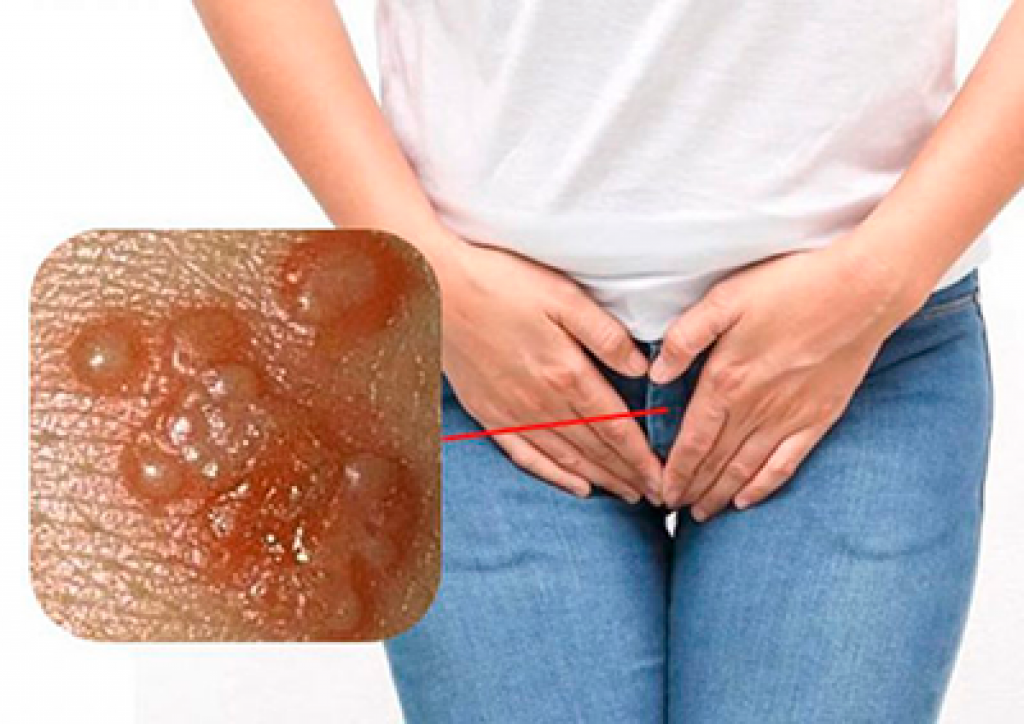
Living with HPV: Managing Risks and Maintaining Health
For individuals diagnosed with HPV or genital warts, adopting a proactive approach to health management is essential. While the virus itself cannot be cured, its effects can be managed effectively with proper care and regular medical attention.
Key Strategies for Managing HPV
- Adhering to treatment plans for genital warts
- Attending regular cancer screenings
- Practicing safe sex to prevent transmission to partners
- Maintaining a healthy lifestyle to support immune function
- Quitting smoking, as it can increase the risk of HPV-related complications
Can lifestyle changes impact the course of HPV infection? While lifestyle changes cannot eliminate the HPV virus, they can potentially help your body’s immune system manage the infection more effectively. A healthy diet, regular exercise, stress management, and avoiding tobacco use may all contribute to better overall health and potentially reduce the risk of HPV-related complications.
Emotional and Psychological Support
Dealing with an HPV diagnosis or genital warts can be emotionally challenging. It’s important to remember that HPV is extremely common and does not reflect on a person’s character or behavior. Seeking support through counseling, support groups, or trusted friends and family members can be beneficial in coping with the emotional aspects of diagnosis and treatment.

Advances in HPV Research and Future Outlook
The field of HPV research is continuously evolving, with ongoing studies aimed at improving prevention, diagnosis, and treatment options. Staying informed about these advancements can provide hope and potentially new management strategies for those affected by HPV.
Current Areas of HPV Research
- Development of more effective HPV vaccines
- Improved methods for early detection of HPV-related cancers
- Novel treatments for persistent HPV infections
- Understanding factors that influence HPV clearance by the immune system
- Exploring the potential of immunotherapy in treating HPV-related cancers
What promising developments are on the horizon for HPV management? Researchers are exploring various avenues, including therapeutic vaccines that could help the body clear existing HPV infections, more sensitive and specific HPV tests, and targeted therapies for HPV-related cancers. While these are still in development, they offer hope for improved management of HPV and its associated health risks in the future.

The Importance of Ongoing Research Participation
Participation in clinical trials and research studies is crucial for advancing our understanding of HPV and developing new treatments. Individuals interested in contributing to HPV research should discuss potential opportunities with their healthcare providers or look into reputable research institutions conducting HPV-related studies.
In conclusion, while genital warts and HPV present significant health challenges, advancements in prevention, diagnosis, and treatment continue to improve outcomes for those affected. By staying informed, practicing prevention strategies, and working closely with healthcare providers, individuals can effectively manage HPV-related concerns and maintain overall health and well-being.
Genital Warts and HPV
Written by WebMD Editorial Contributors
- What Do Genital Warts Look Like?
- Genital Wart Symptoms
- Genital Wart Testing
- Genital Wart Treatment
- What Should I Do While I Have the Warts?
- What Happens If I Don’t Get Treated?
- HPV and Genital Wart Prevention
- More
Warts are caused by viruses and can appear anywhere on the body. Those that show up in the genital area are caused by the human papillomavirus, commonly called HPV, and are easily transmitted by sexual contact.
HPV infection is the most common sexually transmitted disease (STD) in North America. Certain forms of the virus can cause cervical, rectal, vulvar, vaginal, and penile cancer. According to the CDC, at least 50% of sexually active men and women will get a genital HPV infection at some point in their lives.
After a person has been infected by HPV, it may take one to three months (or longer in some cases) for warts to appear. Some people who have been infected never get warts.
Some people who have been infected never get warts.
Genital warts look like small flesh-colored, pink or red growths in or around the sex organs. The warts may look similar to the small parts of a cauliflower, or they may be very tiny and hard to see. They often appear in clusters of three or four, and may grow and spread rapidly. They usually are not painful, although they may cause mild pain, bleeding, and itching.
Like many STDs, HPV does not always have visible symptoms. But when symptoms do occur, warts may be seen around the genital area. In women, warts can develop on the outside and inside of the vagina, on the cervix (the opening to the uterus), or around the anus. In men, they may be seen on the tip of the penis, the shaft of the penis, on the scrotum, or around the anus. Genital warts also can develop in the mouth or throat of a person who has had oral sex with an infected person.
Because there is no way to predict whether the warts will grow or disappear, people who have been infected should be examined and treated, if necessary.
Your doctor may perform the following tests to check for genital warts and/or related STDs:
- An examination of visible growths to see if they look like genital warts
- Application of a mild acetic acid (vinegar) solution to highlight less visible growths
- A complete pelvic exam and Pap smear (for women)
- A specialized test for high-risk HPV (low risk should not be screened for), collected in a way similar to a Pap smear
- Biopsy of cervical tissue ( if abnormal pap smear or visible abnormality) to make sure there are no abnormal cells that could develop into HPV-related cervical cancer; a cervical biopsy involves taking a small sample of tissue from the cervix and examining it under a microscope.
- Examination of the rectum
Female patients may be referred to a gynecologist (a doctor who specializes in female reproductive health) for further testing and biopsy.
Unfortunately, no treatment can kill the HPV virus that causes the genital warts. Your doctor can remove the warts with laser therapy or by freezing or applying chemicals. Some prescription treatments are available for at-home use. Surgery may be necessary for genital warts that are large or difficult to treat. Still, recurrence remains a problem. You may need to return to your doctor for more treatment.
Your doctor can remove the warts with laser therapy or by freezing or applying chemicals. Some prescription treatments are available for at-home use. Surgery may be necessary for genital warts that are large or difficult to treat. Still, recurrence remains a problem. You may need to return to your doctor for more treatment.
If you have genital warts:
- Keep the area as dry as possible.
- Wear all-cotton underwear. Man-made fabrics can irritate the area and trap moisture.
Unfortunately, despite treatment, having high-risk HPV can increase your risk of cervical, rectal, and penile cancer. But not all forms of the virus are associated with these cancers. If you have genital warts, it is important to get annual check-ups to screen for cancer.
Anyone who’s sexually active can get or spread HPV. Some things can make you more likely to get genital warts, including:
- Having more than one sex partner (or a partner who does)
- Being pregnant
- Having a weakened or damaged immune system
- Smoking
Your best bet at preventing HPV infection and genital warts is to abstain from sex or limit sexual contact to one uninfected person.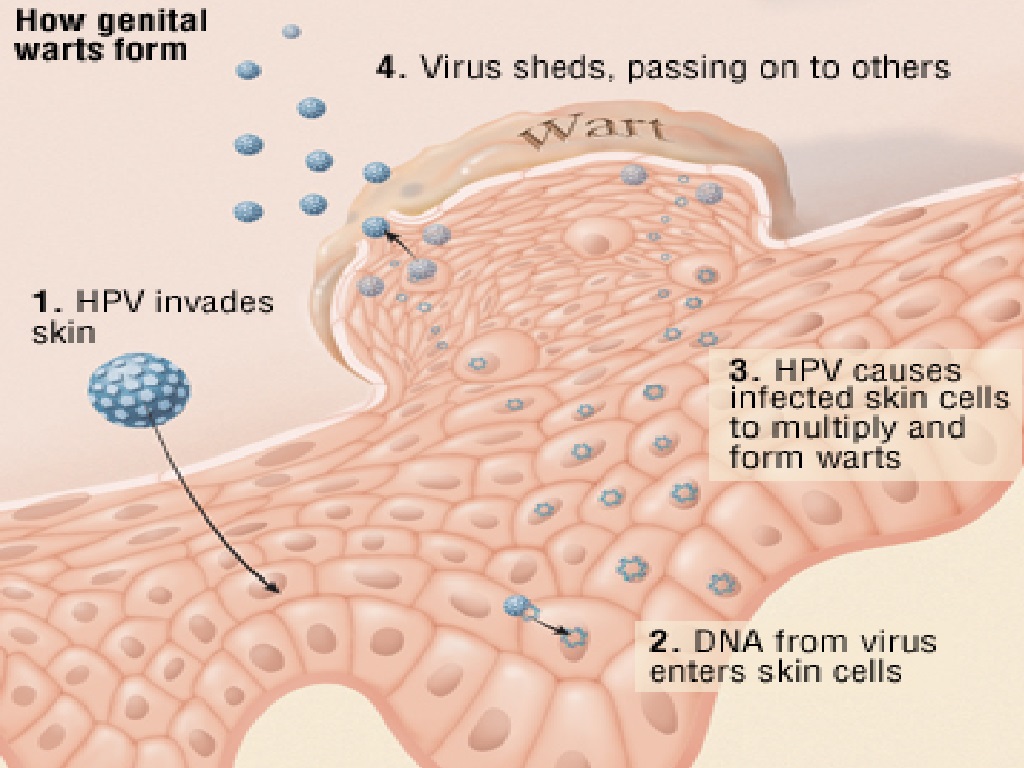 If that is not an option, condoms may provide some protection, but condoms are not 100% effective, because they do not cover the entire penis or surrounding areas.
If that is not an option, condoms may provide some protection, but condoms are not 100% effective, because they do not cover the entire penis or surrounding areas.
There are three vaccines approved to protect against HPV. Gardasil protects against infection from four strains of the HPV virus and offers modest protection against genital warts.Two of these strains, HPV-16 and HPV-18, account for about 70% of cervical cancers. The other two strains covered by the vaccine, HPV- 6 and HPV-11, account for about 90% of genital warts. The vaccine is approved for 9- to 45-year-old females and males.
Gardasil-9 has been proven as effective as Gardasil for the prevention of diseases caused by the four shared HPV types (6, 11, 16, and 18). It also protects against five other strains of HPV virus (31, 33, 45, 52, and 58). It is 90% effective in protecting against cervical, vaginal and vulvar cancers in females, and anal cancer in females and males as well as protecting against genital warts.
Cervarix is given only to females and also protects against HPV-16 and HPV-18.
Hot Topics
Genital Warts and HPV
Written by WebMD Editorial Contributors
- What Do Genital Warts Look Like?
- Genital Wart Symptoms
- Genital Wart Testing
- Genital Wart Treatment
- What Should I Do While I Have the Warts?
- What Happens If I Don’t Get Treated?
- HPV and Genital Wart Prevention
- More
Warts are caused by viruses and can appear anywhere on the body. Those that show up in the genital area are caused by the human papillomavirus, commonly called HPV, and are easily transmitted by sexual contact.
Those that show up in the genital area are caused by the human papillomavirus, commonly called HPV, and are easily transmitted by sexual contact.
HPV infection is the most common sexually transmitted disease (STD) in North America. Certain forms of the virus can cause cervical, rectal, vulvar, vaginal, and penile cancer. According to the CDC, at least 50% of sexually active men and women will get a genital HPV infection at some point in their lives.
After a person has been infected by HPV, it may take one to three months (or longer in some cases) for warts to appear. Some people who have been infected never get warts.
Genital warts look like small flesh-colored, pink or red growths in or around the sex organs. The warts may look similar to the small parts of a cauliflower, or they may be very tiny and hard to see. They often appear in clusters of three or four, and may grow and spread rapidly. They usually are not painful, although they may cause mild pain, bleeding, and itching.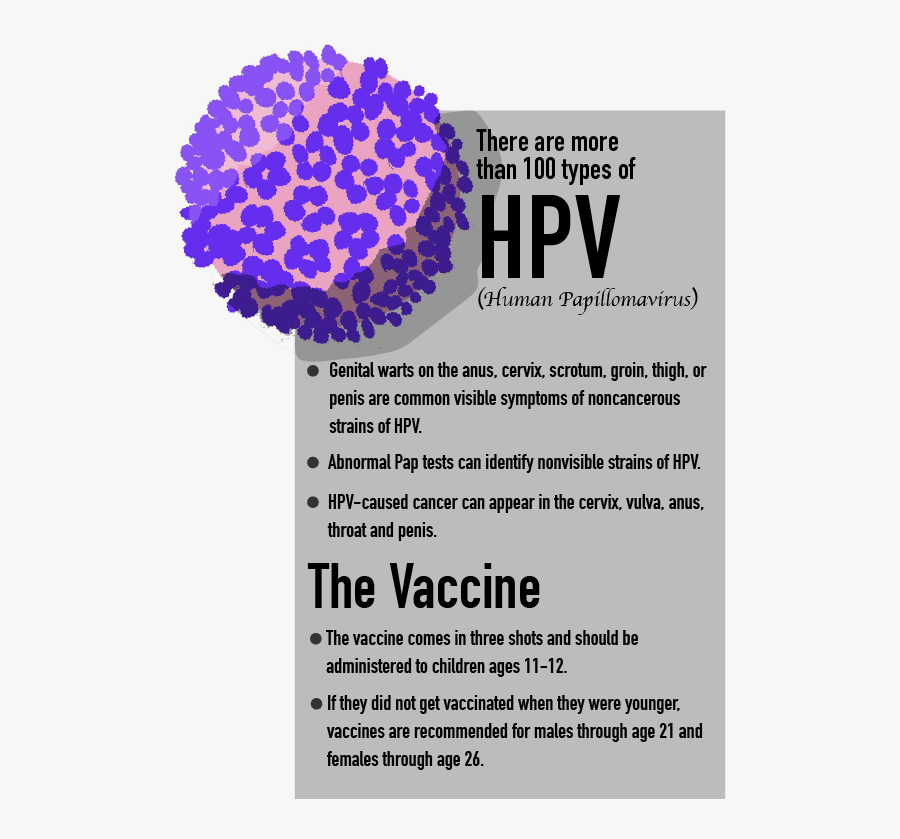
Like many STDs, HPV does not always have visible symptoms. But when symptoms do occur, warts may be seen around the genital area. In women, warts can develop on the outside and inside of the vagina, on the cervix (the opening to the uterus), or around the anus. In men, they may be seen on the tip of the penis, the shaft of the penis, on the scrotum, or around the anus. Genital warts also can develop in the mouth or throat of a person who has had oral sex with an infected person.
Because there is no way to predict whether the warts will grow or disappear, people who have been infected should be examined and treated, if necessary.
Your doctor may perform the following tests to check for genital warts and/or related STDs:
- An examination of visible growths to see if they look like genital warts
- Application of a mild acetic acid (vinegar) solution to highlight less visible growths
- A complete pelvic exam and Pap smear (for women)
- A specialized test for high-risk HPV (low risk should not be screened for), collected in a way similar to a Pap smear
- Biopsy of cervical tissue ( if abnormal pap smear or visible abnormality) to make sure there are no abnormal cells that could develop into HPV-related cervical cancer; a cervical biopsy involves taking a small sample of tissue from the cervix and examining it under a microscope.

- Examination of the rectum
Female patients may be referred to a gynecologist (a doctor who specializes in female reproductive health) for further testing and biopsy.
Unfortunately, no treatment can kill the HPV virus that causes the genital warts. Your doctor can remove the warts with laser therapy or by freezing or applying chemicals. Some prescription treatments are available for at-home use. Surgery may be necessary for genital warts that are large or difficult to treat. Still, recurrence remains a problem. You may need to return to your doctor for more treatment.
If you have genital warts:
- Keep the area as dry as possible.
- Wear all-cotton underwear. Man-made fabrics can irritate the area and trap moisture.
Unfortunately, despite treatment, having high-risk HPV can increase your risk of cervical, rectal, and penile cancer. But not all forms of the virus are associated with these cancers. If you have genital warts, it is important to get annual check-ups to screen for cancer.
Anyone who’s sexually active can get or spread HPV. Some things can make you more likely to get genital warts, including:
- Having more than one sex partner (or a partner who does)
- Being pregnant
- Having a weakened or damaged immune system
- Smoking
Your best bet at preventing HPV infection and genital warts is to abstain from sex or limit sexual contact to one uninfected person. If that is not an option, condoms may provide some protection, but condoms are not 100% effective, because they do not cover the entire penis or surrounding areas.
There are three vaccines approved to protect against HPV. Gardasil protects against infection from four strains of the HPV virus and offers modest protection against genital warts.Two of these strains, HPV-16 and HPV-18, account for about 70% of cervical cancers. The other two strains covered by the vaccine, HPV- 6 and HPV-11, account for about 90% of genital warts. The vaccine is approved for 9- to 45-year-old females and males.
Gardasil-9 has been proven as effective as Gardasil for the prevention of diseases caused by the four shared HPV types (6, 11, 16, and 18). It also protects against five other strains of HPV virus (31, 33, 45, 52, and 58). It is 90% effective in protecting against cervical, vaginal and vulvar cancers in females, and anal cancer in females and males as well as protecting against genital warts.
Cervarix is given only to females and also protects against HPV-16 and HPV-18.
Hot Topics
Papillomas.
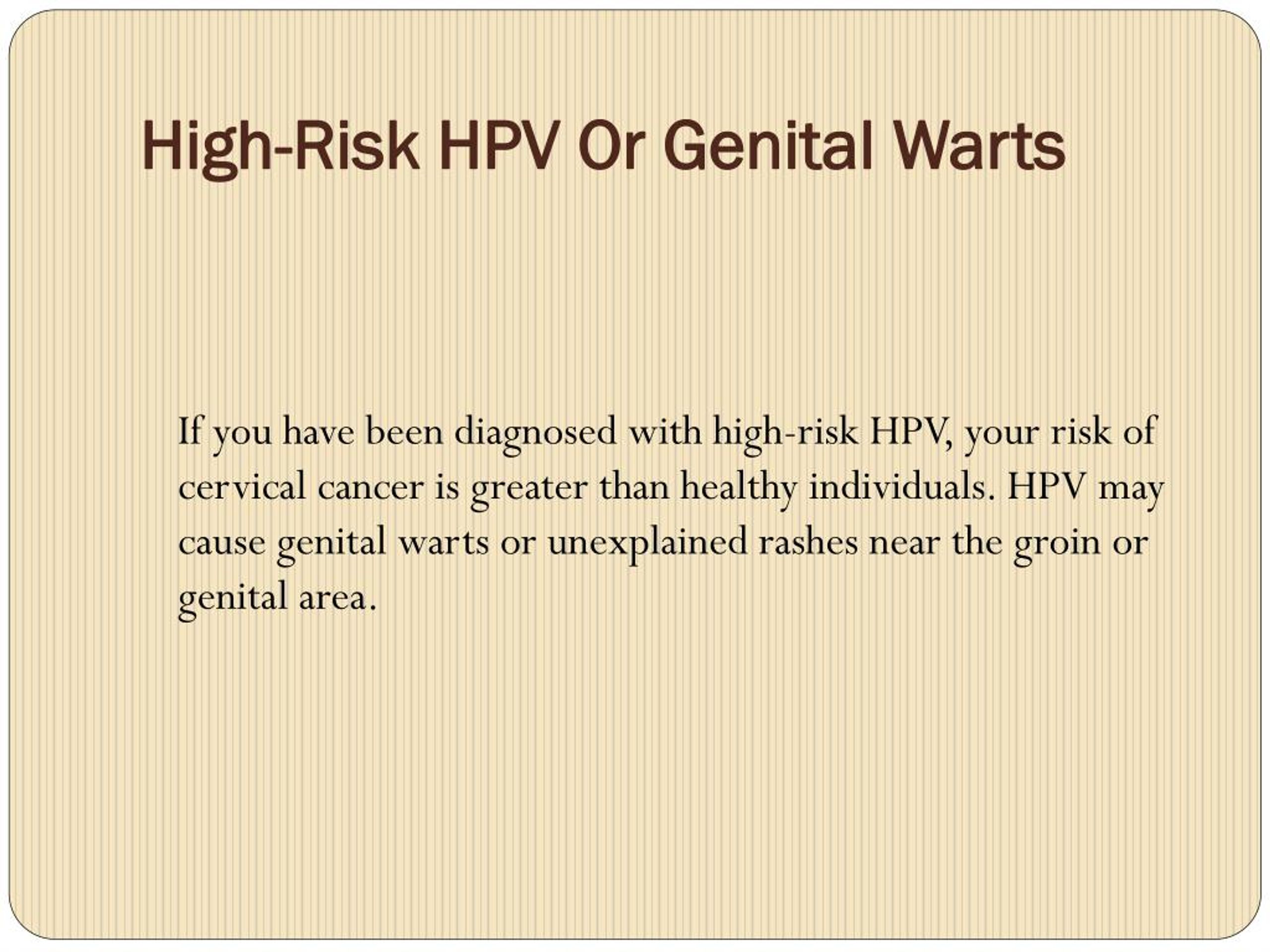 causes, treatment, diagnosis – Medical dynasty
causes, treatment, diagnosis – Medical dynasty
Papilloma is a benign tumor-like formation of the skin and mucous membranes of viral etiology. It has the appearance of a papilla on a narrow base (stalk), soft or dense texture, from light to dark brown. Localization of papillomas on the skin leads to the formation of a cosmetic defect, in the larynx – a violation of breathing, voice, on the mucous membrane of internal organs – ulceration and bleeding. Relapses of the disease are possible, the most formidable complication is malignant degeneration. Removal of papillomas can be carried out by electrocoagulation, cryodestruction, surgical excision, radio wave method or laser exposure.
General information
Papillomas are a disease affecting epithelial cells and skin. The cause of papillomas is the human papillomavirus, which belongs to the Papoviridae family, the Papillomavirus group. Among HPVs, viruses with high and low oncogenic risk are distinguished. Oncogenicity of papillomas is explained by the ability of the virus to integrate its DNA into the genome of human cells.
Human papillomavirus infection mechanism
Getting into the human body, at the initial stage, HPV infects the basal cells of the epithelium. Microtraumas, abrasions, cracks and other skin lesions contribute to the penetration of the papillomavirus into the body. For a long time, the virus can initially multiply without manifesting itself clinically (chronic carriage). If the virus multiplies in the surface layers of the skin, then over time, even with chronic carriage of the papillomavirus, cell hyperplasia is observed.
Since the human papillomavirus is unstable in the external environment, infection occurs through direct contact. Promiscuous sexual relations lead to infection; smoking, pregnancy, endometriosis, beriberi, immunodeficiencies are predisposing factors for infection to occur when interacting with the virus. The risk of infection increases with frequent contact with bare human skin, such as massage.
Clinical manifestations of papillomas
Papilloma is neoplasm of the skin or mucous membranes and looks like a papillary growth that protrudes above the surrounding tissue.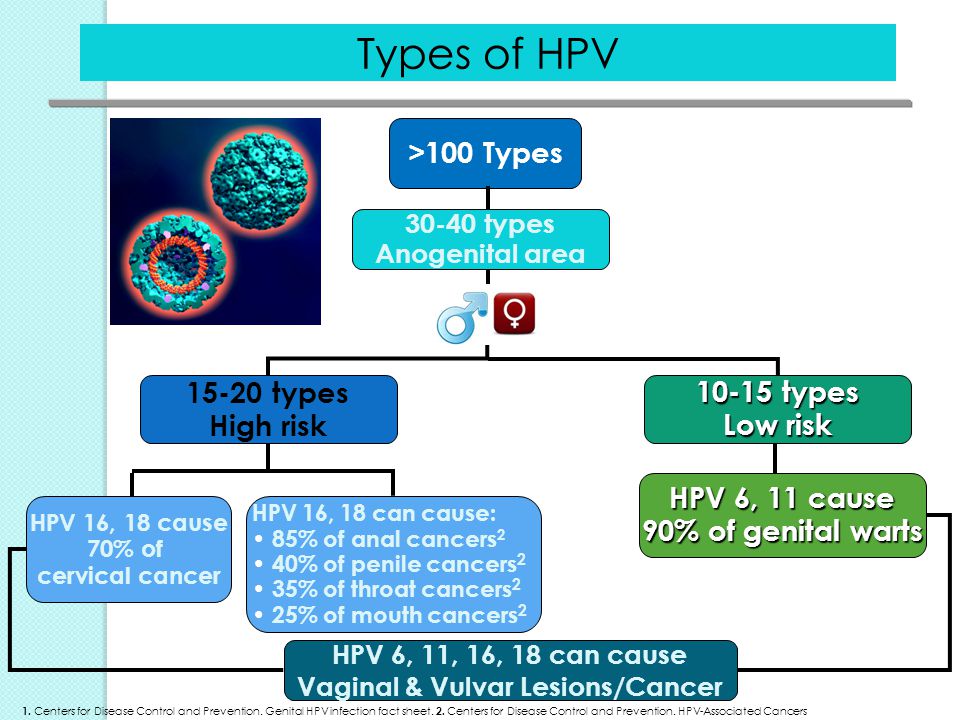 Papillomas are localized on the skin, mucous membranes, in the inguinal region and on the genitals, in some cases, papillomas are found in the renal pelvis and on the mucous membrane of the ureters.
Papillomas are localized on the skin, mucous membranes, in the inguinal region and on the genitals, in some cases, papillomas are found in the renal pelvis and on the mucous membrane of the ureters.
Since the papilloma consists of connective tissue covered with skin and contains blood vessels, bleeding is possible when it is traumatized. The neoplasm grows upward outward in the form of scattered papillae in various directions and looks like a cauliflower.
Skin color may not change, but most papillomas are white to dirty brown. Favorite localization – the skin of the hands and arms. In immunocompromised patients, papillomatosis becomes widespread. Primary changes in the skin begin to appear 1-6 months after infection. The concentration of the virus in the affected areas reaches a maximum by the 6th month from the moment of infection, this period is the most contagious.
Depending on the type of virus, the clinical manifestations of papillomas are variable. So, vulgar papillomas look like a hard bump with a diameter of 1 mm or more with a rough keratinizing surface. Vulgar papillomas tend to merge, and therefore often affect large areas of the skin. Simple (vulgar) papillomas are localized everywhere, but more often they affect the skin of the fingers and the back of the palms. In especially young children, papillomas affect the knees, this is due to physiological characteristics, since children crawl without clothes. Usually vulgar papillomas are located in groups, however, a long-term existence of a single element for several years is possible. Immunodeficiency states and general diseases contribute to the spread of the process; in isolated cases, papilloma vulgaris becomes malignant.
Vulgar papillomas tend to merge, and therefore often affect large areas of the skin. Simple (vulgar) papillomas are localized everywhere, but more often they affect the skin of the fingers and the back of the palms. In especially young children, papillomas affect the knees, this is due to physiological characteristics, since children crawl without clothes. Usually vulgar papillomas are located in groups, however, a long-term existence of a single element for several years is possible. Immunodeficiency states and general diseases contribute to the spread of the process; in isolated cases, papilloma vulgaris becomes malignant.
Plantar papillomas are caused by HPV 1,2,4. A few months after infection, a small shiny bump appears on the skin of the sole, which has all the signs of a normal papilloma and is surrounded by a protruding rim. In some cases, small child neoplasms appear around one papilloma, which outwardly resemble vesicles. Then mosaic papillomatosis is diagnosed.
Papillomas on the soles are often painful, especially when walking.:max_bytes(150000):strip_icc()/genital-warts-101-582005_final-0d88c99e55394d0d8f61d1fef3077582.jpg) Approximately in 30% of cases they resolve themselves, more often self-healing is observed in young children. They are often confused with calluses that appear between the fingers with prolonged squeezing. However, corns, unlike papillomas, have a smooth surface and retain a skin pattern.
Approximately in 30% of cases they resolve themselves, more often self-healing is observed in young children. They are often confused with calluses that appear between the fingers with prolonged squeezing. However, corns, unlike papillomas, have a smooth surface and retain a skin pattern.
Flat papillomas are caused by HPV 3.10. These papillomas are of unaltered skin color and look like smooth flat bumps, sometimes they can be yellowish or slightly pink in color, more often rounded. There are also polygonal plantar papillomas. Neoplasms cause pain, itch, the affected area is hyperemic.
Filamentous papillomas are diagnosed in half of those who applied over the age of 50 for skin neoplasms, they are also called acrochords. They are localized on the skin around the eyes, in the groin area, in the armpits and on the neck. First, small bumps of a yellowish tint appear, which later increase and gradually transform into dense elongated elastic formations up to 5-6 mm in size. If acrochords are localized in places where trauma is possible, then they become inflamed and cause pain. Filamentous papillomas are not prone to spontaneous disappearance. In patients diagnosed with filiform papillomas, rectal polyps are often observed.
If acrochords are localized in places where trauma is possible, then they become inflamed and cause pain. Filamentous papillomas are not prone to spontaneous disappearance. In patients diagnosed with filiform papillomas, rectal polyps are often observed.
HPV 13, 32 cause local epithelial hyperplasia, which is characterized by the appearance of small papillary neoplasms on the oral mucosa and on the red border of the lips, which slightly rise above the skin and tend to merge.
One of the rare papillomas are Lewandowski-Lutz papillomas (epidermodysplasia warty). Mostly children and adolescents are ill. Sometimes warty epidermodysplasia is familial. Clinically, it appears as multiple reddish-brownish spotted papillomas on the hands and feet. If papillomas are located on areas of the skin that are most exposed to ultraviolet radiation, then in 30% of cases they become malignant and degenerate into malignant tumors with germination in neighboring tissues.
HPV, which is the causative agent of genital warts, can be at low, medium and high risk of oncological degeneration, therefore, when diagnosing genital warts, a PCR examination should always be performed.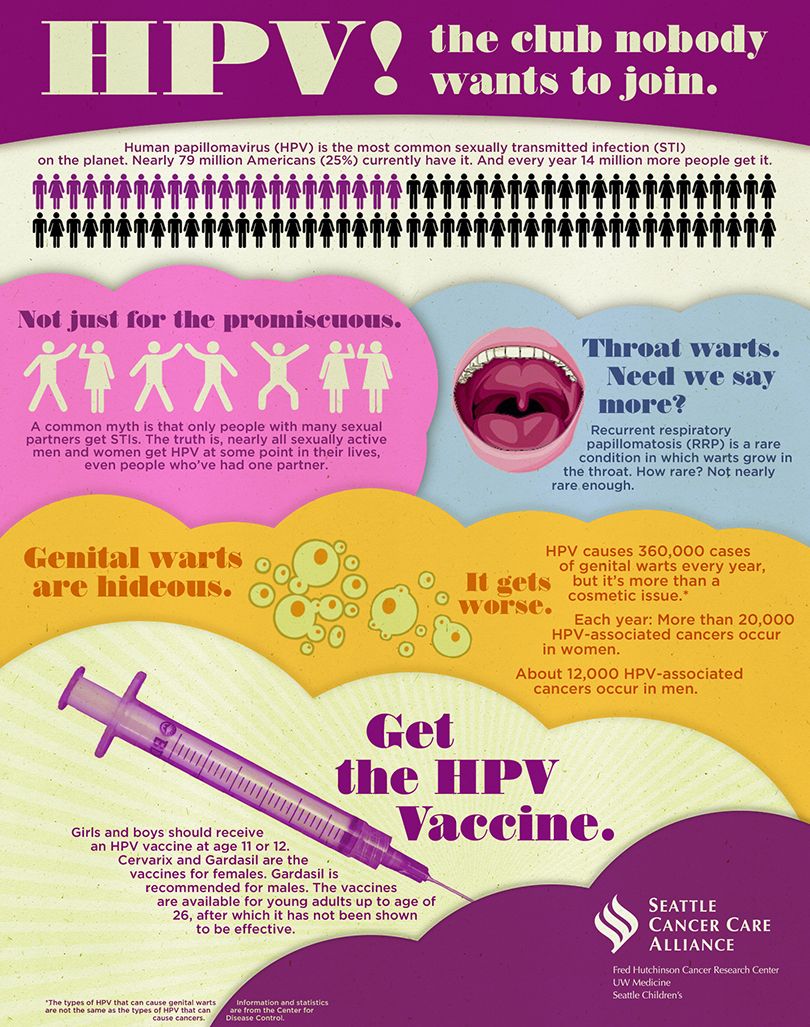 The incubation period is from several weeks to several months. Since in some cases the changes are minimal, these papillomas go unnoticed. The main route of transmission is sexual. The risk group includes people with immunodeficiencies and frequently changing sexual partners. Outwardly, they look like pink or pale gray pigmented spiky growths on the stem.
The incubation period is from several weeks to several months. Since in some cases the changes are minimal, these papillomas go unnoticed. The main route of transmission is sexual. The risk group includes people with immunodeficiencies and frequently changing sexual partners. Outwardly, they look like pink or pale gray pigmented spiky growths on the stem.
In most cases, there is pain, burning, itching, irritation when touched and rubbed with underwear, often injured and bleed. They are localized in the vestibule of the vagina, on the labia minora, less often genital warts are found in the vagina and on the cervix. In men, the opening of the urethra is affected. The affected area depends on sexual behavior, so, in people who practice anal contact, genital warts occur in the perineum and in the perianal zone. In some cases, genital warts are diagnosed on the oral mucosa and on the red border of the lips, which is again associated with the peculiarities of sexual life.
Juvenile papillomas of the larynx are rare, they are caused by HPV 6. 11; mostly children under five years of age are ill. Infection occurs during childbirth, when the woman in labor has papillomas in the vagina and the child, while passing through the birth canal, takes a premature breath. The disease is characterized by papilloma growths on the vocal cords, which leads to difficulty in air circulation and to speech disorders.
11; mostly children under five years of age are ill. Infection occurs during childbirth, when the woman in labor has papillomas in the vagina and the child, while passing through the birth canal, takes a premature breath. The disease is characterized by papilloma growths on the vocal cords, which leads to difficulty in air circulation and to speech disorders.
Diagnosis of papillomas
Diagnosis of papillomas carried out dermatologist or venereologist . Due to the large number of types of virus, it has its own characteristics. An accurate diagnosis based on visual examination is possible only in the classic case of genital warts, but this does not provide accurate information about the type of virus and its oncogenicity. Therefore, if a papillomatous nature of the neoplasms is suspected, they resort to PCR diagnostics of the DNA of the virus.
PCR diagnostics allows not only to confirm the presence of human papillomavirus in the body and determine its type, but also to diagnose how many viruses are present in the body at the time of the analysis.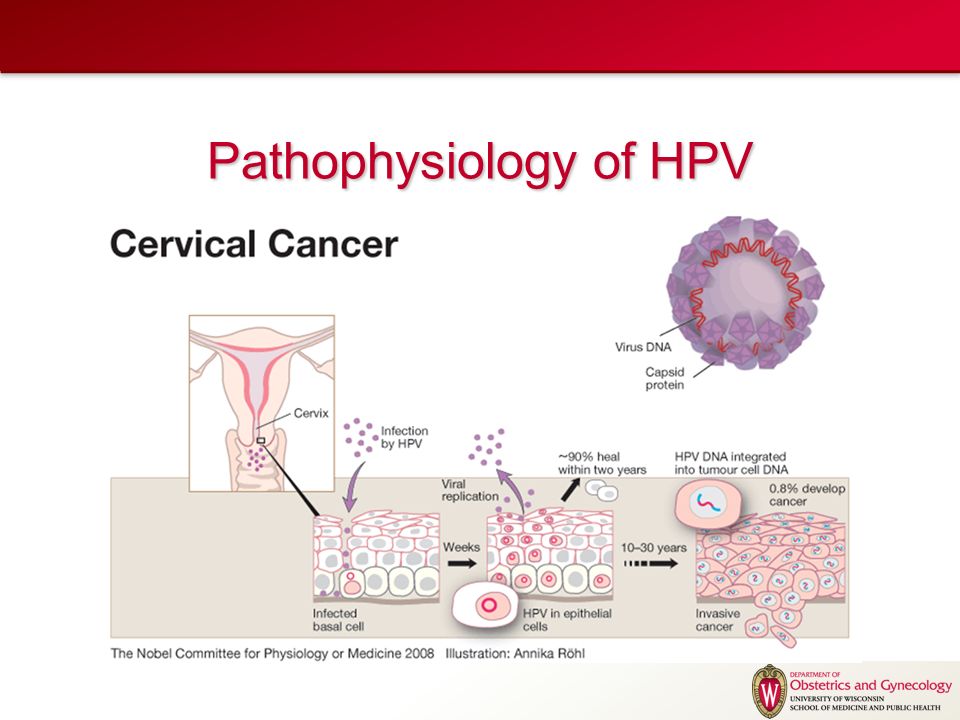 This is of diagnostic importance, since, knowing the percentage of the virus and its type, it is possible to determine the approximate timing of infection and identify contact persons for the purpose of examination and prescribing preventive therapy. PCR diagnostics also provides information on whether papillomas have a chronic course or whether they are the result of a simultaneous decrease in immunity. Thanks to these data, it is possible to prescribe adequate therapy.
This is of diagnostic importance, since, knowing the percentage of the virus and its type, it is possible to determine the approximate timing of infection and identify contact persons for the purpose of examination and prescribing preventive therapy. PCR diagnostics also provides information on whether papillomas have a chronic course or whether they are the result of a simultaneous decrease in immunity. Thanks to these data, it is possible to prescribe adequate therapy.
If the only method of treatment is the removal of papillomas, then in parallel with surgery, a biopsy is performed for cytological examination. Histological examination of papilloma tissue gives more accurate results, since both cells are subject to examination, as well as the correct arrangement of their layers and structural features of the tissue. This gives reliable results about the degree of changes in the body and the likelihood of malignancy, since long-term and untreated papillomas often lead to oncological diseases than timely detected HPV with a high degree of oncorisk.
As a rule, PCR diagnostics is of a screening nature and, if the analysis confirms the presence of the virus, then an additional study is carried out.
Treatment of papillomas
The treatment regimen for papillomas in each case is selected individually. If HPV is detected during the diagnosis, but there are no clinical manifestations yet, then preventive therapy with cytostatics is prescribed. It is quite effective and allows you to “lull” the virus for several years. Patients who are carriers of HPV are advised to periodically conduct a PCR examination and use barrier contraceptives so as not to expose their partner to the risk of infection with the human papillomavirus.
Inosine pranobex is a drug for the treatment of papillomas from the group of antiviral agents that inhibits the reproduction of viruses. It is one of the most preferred, as it has immunomodulatory properties. Indications for use are diagnosed papillomas with a combination of other viral infections, such as cytomegalovirus infections, measles and mumps viruses.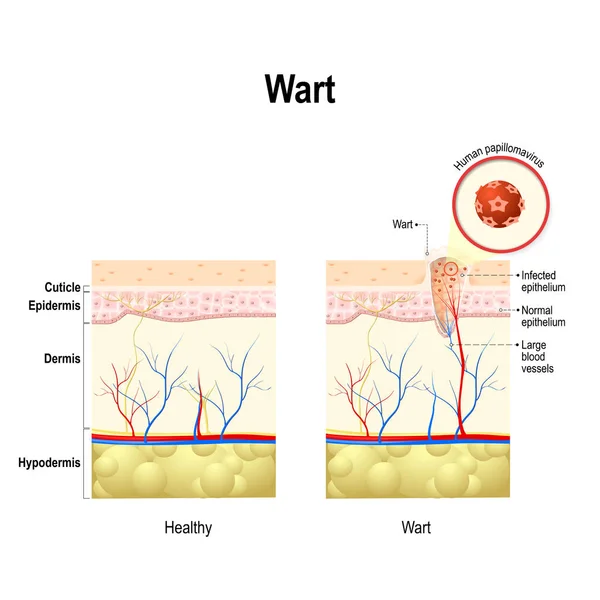 The presence of the herpes virus, chronic viral hepatitis and immunodeficiencies also requires the inclusion of Isoprinosine in the treatment regimen. Since the therapy of papillomas is long-term, inosine pranobex should be taken only under the supervision of a physician, since laboratory parameters must be monitored. The use of immunomodulators and courses of vitamins are indicated for all patients with HPV.
The presence of the herpes virus, chronic viral hepatitis and immunodeficiencies also requires the inclusion of Isoprinosine in the treatment regimen. Since the therapy of papillomas is long-term, inosine pranobex should be taken only under the supervision of a physician, since laboratory parameters must be monitored. The use of immunomodulators and courses of vitamins are indicated for all patients with HPV.
If there are manifestations of HPV on the skin and mucous membranes, then, depending on the localization and symptoms, they resort to cryodestruction of papillomas, electrocoagulation or removal of papillomas with a laser. It is possible to use another modern method of surgical treatment – removal of papillomas by radio waves. If the papilloma has signs of malignancy, then the affected area is excised with a scalpel with the capture of healthy tissues.
It should be borne in mind that the removal of papillomas does not lead to a complete recovery, since today there are no drugs that have a detrimental effect on HPV.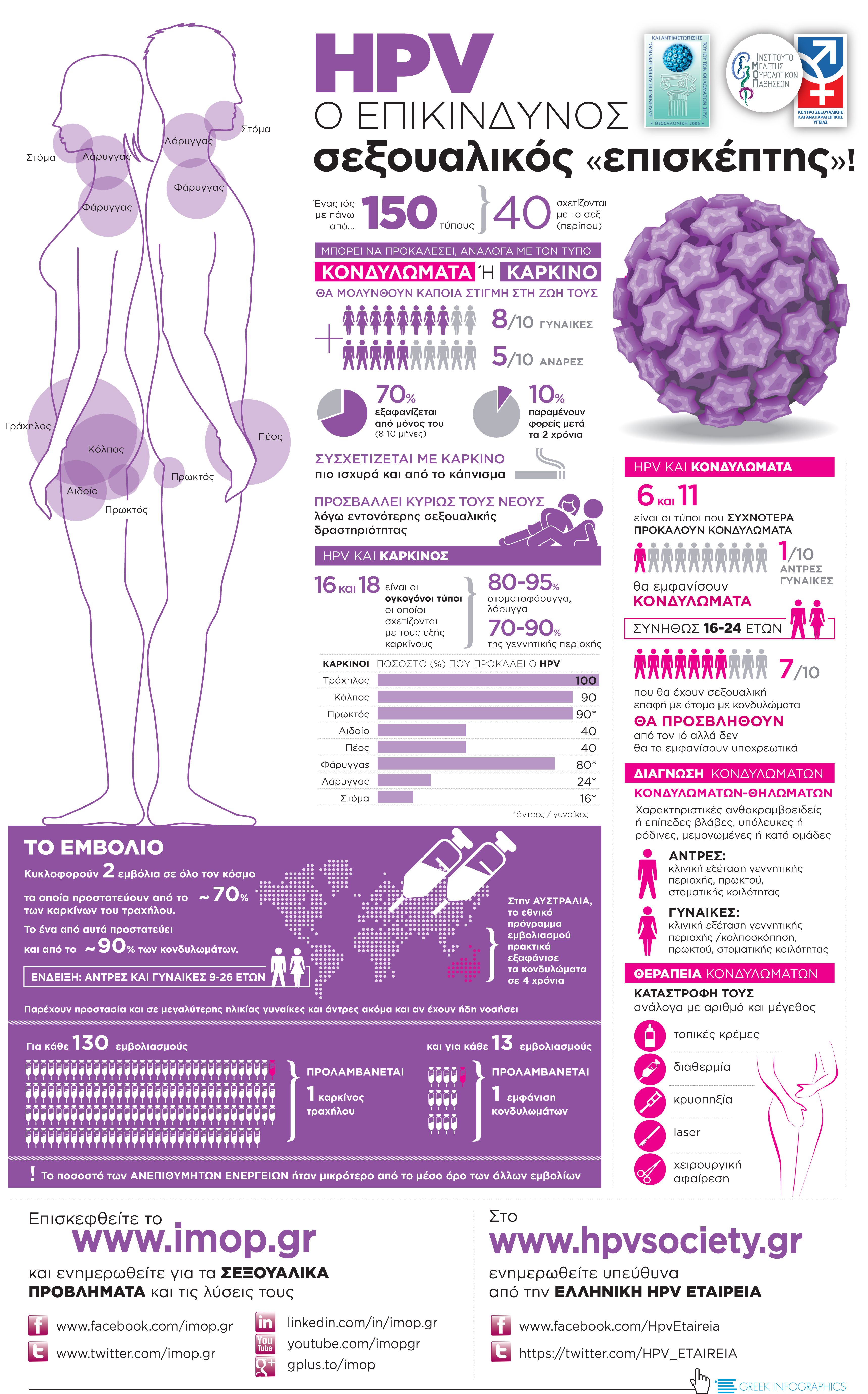 Therefore, patients with previously diagnosed papillomas should be periodically examined and take courses of antiviral therapy.
Therefore, patients with previously diagnosed papillomas should be periodically examined and take courses of antiviral therapy.
Since HPV is mainly transmitted sexually, the only way to prevent papillomas is a barrier method of contraception. When planning pregnancy, it is necessary to diagnose and, if necessary, treat the virus in order to reduce the likelihood of infection of the child during childbirth and in the first years of life.
Material taken from the site: https://www.krasotaimedicina.ru/
Our specialists
Human papillomavirus | MTsRZ.RF
Human papillomavirus
HPV, or HPV (humanpapillomavirus), is a widespread virus that causes a variety of diseases in both women and men.
There are more than 190 types of human papillomavirus, of which 80 are the most studied. Different types of the virus can cause different diseases.
One person can be a carrier of several types of human papillomavirus at once. Primary changes in the skin and mucous membranes usually begin to appear 2-6 months after infection.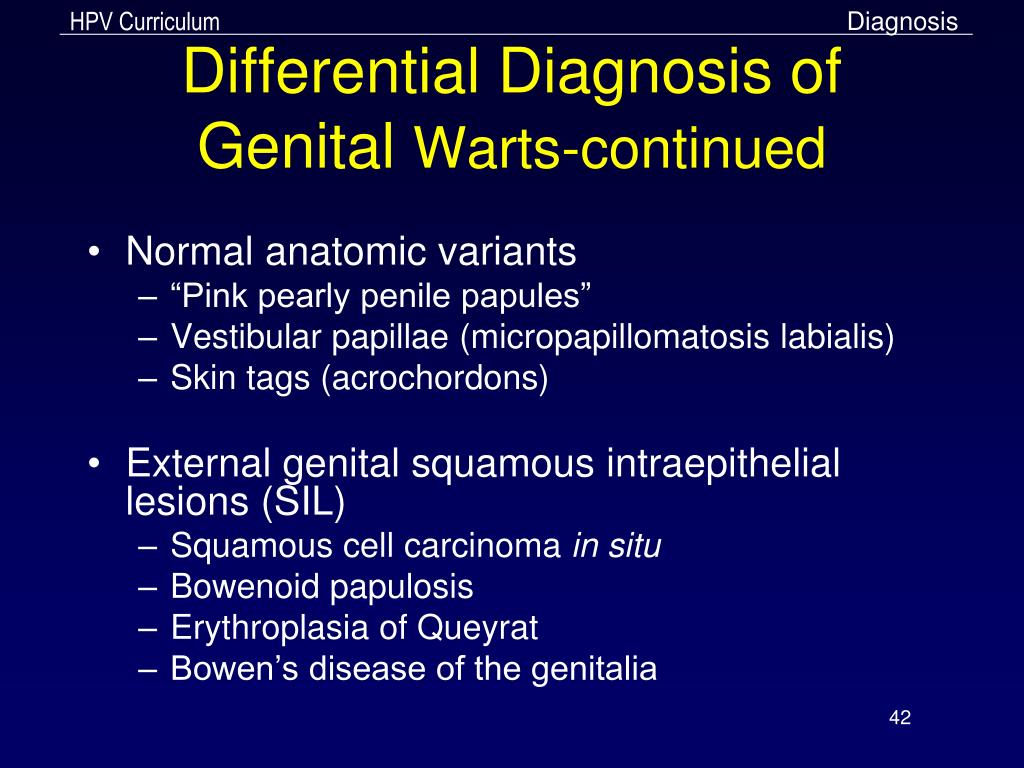
HPV is transmitted through sexual and household routes through contact with the skin and mucous membranes of an infected person.
In the presence of genital warts, the probability of infection approaches 100%. Using a condom does not always prevent infection, but it does reduce the chance of infection if you become infected.
The main routes of infection are:
Unprotected sexual contact with carriers of the infection (the introduction of the virus occurs not only during classical sex, but also during anal and oral intercourse)
Interaction with mucous membranes of infected persons
Contact with carrier secretions
Using someone else’s underwear and bed linen (the latter option is especially relevant for hotels)
Eating food from poorly washed dishes in catering establishments (infection is unlikely)
Three main types of virus:
Non-oncogenic
These viruses cause the appearance of flat warts that do not degenerate into a malignant neoplasm.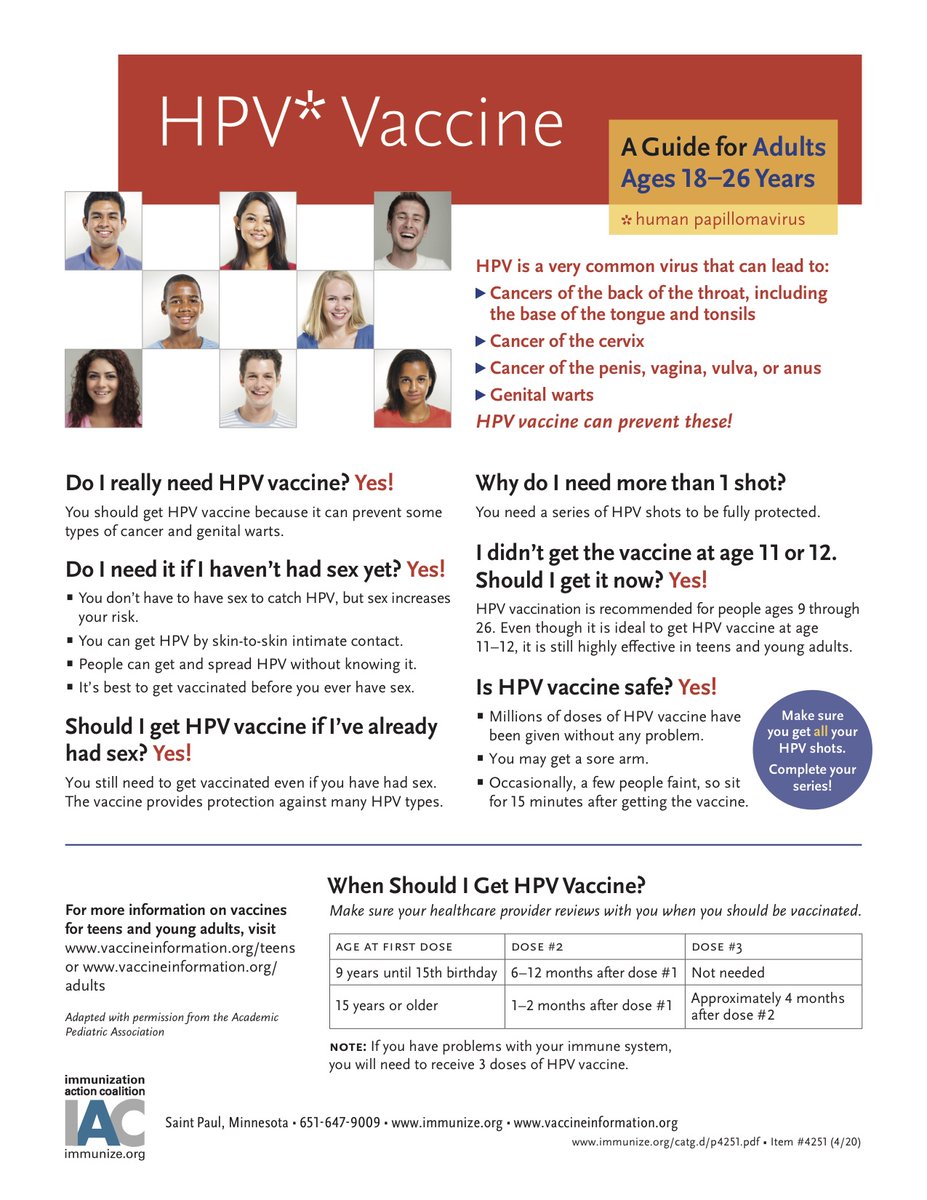 Basically, these are viruses of the 1st, 2nd, 3rd and 5th types.
Basically, these are viruses of the 1st, 2nd, 3rd and 5th types.
Low risk of developing cancer
This group includes viruses that can contribute to the degeneration of cells into cancer, but this happens very rarely. These are viruses of the following types: 6th, 11th, 42nd, 43rd and 44th.
High probability of rebirth
The last group is the most dangerous, since there is a high risk of developing a malignant neoplasm. The most common viruses are types 16 and 18. The rest come across much less often: 31st, 33rd, 35th, 39th, 45th, 51st, 52nd, 56th, 58th, 59th and 68th types.
In women, human papillomavirus infection can cause the appearance of genital warts, which in many cases are found only during a gynecological examination.
They grow about three months after infection. Most often they are formed on the labia minora, in the vagina, on the cervix, on the skin around the anus.
Outwardly, they are small formations with uneven edges, located on the “leg”.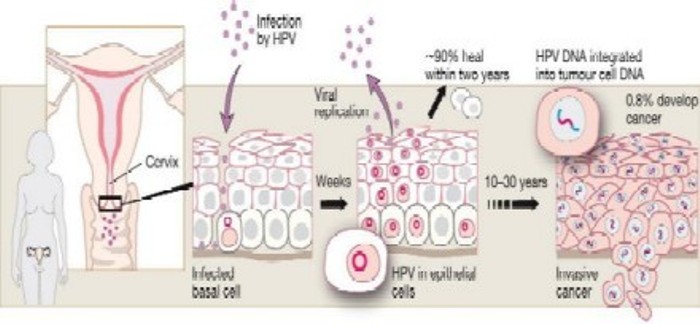
The following symptoms should alert a woman:
Pain in the pelvis and back
The presence of rashes on the skin and mucous membranes
Bleeding between periods or after sexual intercourse
Vaginal discharge with an unpleasant odor
General fatigue, loss of appetite
Discomfort when urinating, pain
Infection usually occurs during the first years of sexual activity, it can be latent, without any manifestation. The virus is embedded in the cells of the skin or mucosa and is waiting for the right moment – the weakening of the immune system, to begin to multiply actively. Pregnancy is one of those “opportune moments.” After all, the immunity of a pregnant woman is reduced. And this makes it possible to develop many latent infections, one of which is HPV. Therefore, in a woman who is absolutely healthy before pregnancy, oncological diseases can begin after conception.
Therefore, in a woman who is absolutely healthy before pregnancy, oncological diseases can begin after conception.
HPV during pregnancy can be dangerous for both the woman and the unborn child. Papillomas are localized in the cervix or on the walls of the vagina. During childbirth, the baby can take a premature breath, which can lead to infection.
The infant’s immune system is not strong enough to resist the virus. And subsequently, an extremely rare disease develops: papillomatosis of the larynx. If there was no treatment during pregnancy, experts suggest operative delivery. This will protect the baby from getting into the body of a viral infection.
Papillomatosis of the larynx in children develops before the age of 1-2 years.
Symptoms of papillomatosis of the larynx in a child:
Hoarseness of voice
Speech disorder
Swallowing disorder
Labored breathing
False croup (narrowing of the lumen of the larynx) or stenosis of the larynx (excruciating barking cough, respiratory failure).
 The latter is a deadly sign of laryngeal papillomatosis in children, because it can cause suffocation.
The latter is a deadly sign of laryngeal papillomatosis in children, because it can cause suffocation.
HPV infection in men may be asymptomatic. But in some men, single or numerous warts (anogenital warts or genital warts) appear on the glans and shaft of the penis, the mucous membrane of the inner layer of the foreskin, on the skin of the scrotum, perineum, or in the area around the anus.
Outwardly, they resemble flesh-colored skin bumps and are soft to the touch. In most cases, warts do not cause discomfort. Sometimes their appearance is accompanied by itching, slight soreness or burning. Often, foci of HPV infection are found inside the urethra. The appearance of warts in the urethra can lead to impaired urination: splashing or interruption of the urine stream (a symptom of obstructive urination).
The more often a man changes his partner, the greater the chances of contracting human papillomavirus infection. In the process of intimate contact, the virus penetrates the skin and mucous membranes through microcracks, and the probability of infection is quite high (about 60% with a single sexual contact).
Symptoms of HPV in both women and men may include the presence of small growths not only on the genitals, but also in other places – under the breasts, in the armpit, on the neck and on the eyelids.
HPV tests are used to detect HPV. The most common is PCR analysis, which allows not only to identify HPV, but also to clarify its type and quantity.
An analysis for the human papillomavirus must also be done if you are planning a pregnancy, as well as when identifying the causes of infertility, miscarriages and gestation pathology. Moreover, both partners must undergo an examination – HPV is transmitted during unprotected sexual intercourse very easily, and if one of the partners is infected, then the second one, for sure, too.
Manifestations of papillomavirus infection can be detected during examination of the external genitalia and cervix. During the examination, the doctor takes smears for an HPV test, as well as a smear for oncocytology from the surface of the cervix, which allows you to evaluate the cells covering it.
To avoid false HPV test results, you need to properly prepare:
To pass the tests, it is necessary to exclude the use of medications at least 2 weeks before the planned examination
During the diagnosis period, it is necessary to follow a diet with the exception of fatty, spicy and smoked foods.
Eliminate the consumption of alcoholic beverages
Limit smoking at least 2 hours before the test (the result will be more reliable)
Reduce the degree of emotional, physical and mental stress
Eliminate the use of antibiotics and immunomodulators for at least 2 weeks
When donating material from the cervical canal, exclude sexual contact for 3 days
When donating a biomaterial from the genitourinary organs, it is necessary to exclude urination for 2-3 hours
In our medical center you can undergo both a general screening test and a quantitative HPV test – a method that allows you to determine the critical concentration of the virus that is directly related to the risk of developing cancer.
For men, the disease is less dangerous than for women. And if some carcinogenic types of the virus that cause the development of formations on the skin in a man rarely provoke tumors in the stronger sex, then a woman, having contracted them from a man, runs the risk of developing cervical cancer.
The manifestations of the disease in women also include cervical intraepithelial neoplasia – a precancerous condition of the uterine mucosa.
It has been proven that there is a direct link between cervical cancer and human papillomavirus. HPV is detected in 100% of cancer patients. Cervical cancer is a malignant neoplasm that occurs in the area of the cervix. Moreover, human papillomaviruses 16 and 18 strains are responsible for 70% of cases of cervical cancer.
According to the latest data from the International Agency for Research on Cancer, the incidence of new cases of cervical cancer in Russia is 15.9per 100 thousand people.
This figure is higher than in the European Union (9.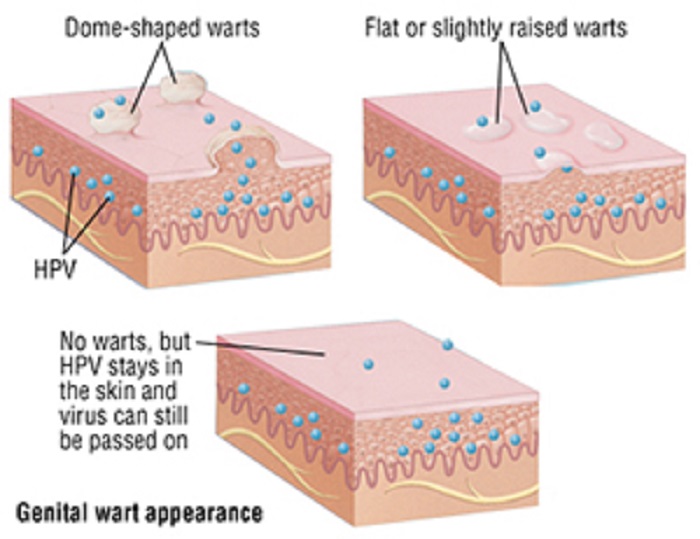 6) and in the USA (6.6). Every day in Russia, 17 women die from cervical cancer. Therefore, it is necessary to periodically undergo an examination in order to identify the disease in time and cure it.
6) and in the USA (6.6). Every day in Russia, 17 women die from cervical cancer. Therefore, it is necessary to periodically undergo an examination in order to identify the disease in time and cure it.
Colposcopy
When HPV is detected in a woman, it is obligatory to perform colposcopy — examination of the cervix under multiple magnification using special tests to exclude hidden pathology of the cervix. If necessary, an additional cervical biopsy is performed – taking a small piece of cervical tissue for histological examination.
This method is widely used, absolutely accessible and has no contraindications. With the help of colposcopy, pathological conditions can be detected at the very initial stages, when changes are not yet visible to the eye.
Modern colposcopes are binocular microscopes with a powerful light source that allow you to image the cervix at multiple magnification (4 – 40 times). Devices that allow you to broadcast an image on a computer screen and fix the examination are called video colposcopes.
Examination of the cervix can be carried out in two versions – simple (survey) and extended colposcopy. During a simple colposcopy, the cervix is exposed in the mirrors and examined under magnification without the use of any additional techniques. Such an examination gives an idea of the shape of the cervix, the presence of ruptures and injuries, and the nature of the discharge.
Extended colposcopy – assessment of the cervix after treatment with special dyes, which allows you to get a comprehensive view of the condition of the cervix.
As a rule, for this purpose, a 3% solution of acetic acid is used, which makes it possible to assess the state of the vessels on the cervix and its altered areas, as well as Lugol’s solution. When the surface of the neck is stained with Lugol’s solution, the altered areas are not stained, which makes it possible to diagnose pathological processes that are invisible to the eye.
The examination can last from 5 to 20 minutes. During the study, the doctor evaluates the condition and appearance of the mucous membrane, the location and type of growth of blood vessels, the level of the epithelium, in the presence of neoplasms, its boundaries, structure, and shape are determined. In the presence of altered areas, it is possible to determine their good quality and identify conditions that can further transform into cervical cancer.
During the study, the doctor evaluates the condition and appearance of the mucous membrane, the location and type of growth of blood vessels, the level of the epithelium, in the presence of neoplasms, its boundaries, structure, and shape are determined. In the presence of altered areas, it is possible to determine their good quality and identify conditions that can further transform into cervical cancer.
Colposcopy, as a rule, ends with sampling for a more accurate diagnosis of the identified changes. The minimum required examination is a microscopic examination of vaginal discharge (smear) and a cytological examination of the epithelium from the exo- and endocervix (to detect atypical cells). The sampling of material for research under the control of colposcopy is performed as accurately as possible, as it allows you to take the material from the changed areas of the neck.
In order to obtain the most accurate results, in addition to the experience of the doctor, an important condition is the correct approach to the study. Before the diagnosis, it is important to consult with a gynecologist who will give recommendations on how to prepare for a colposcopy.
Before the diagnosis, it is important to consult with a gynecologist who will give recommendations on how to prepare for a colposcopy.
Usually a woman is advised:
Two days before the study, refuse sexual intercourse
Do not douche
Do not use vaginal suppositories, tablets, creams
Hygiene methods should be carried out only with clean water, without the use of any detergents.
In our medical center, you can undergo an extended video colposcopy procedure at a convenient time for you by an experienced specialist, using staining and issuing color photographs and a conclusion on the condition of the cervix.
Treatment of HPV
To date, there are no single treatment regimens. The choice of one or another method depends on many internal and external manifestations of the disease and the stage of its development. Unfortunately, there are no methods yet that would be guaranteed to completely eliminate the causative agent of the disease from the body.
Unfortunately, there are no methods yet that would be guaranteed to completely eliminate the causative agent of the disease from the body.
Stages of treatment:
Removal (destruction) of altered areas of the skin and mucous membranes
Anti-relapse treatment
Vaccination
Virological control of cure
Methods for removing warts:
The most modern and priority of them are laser therapy and exposure to the radio wave method. The treatment is performed under local anesthesia and is virtually painless.
Laser coagulation
The method of influencing warts with a beam of laser beams (CO2 laser).
Radio wave method
This is a procedure in which the formation is eliminated by exposure to high frequency radio waves.
Cryotherapy
Removal of genital warts with liquid nitrogen. A small amount of liquid nitrogen is applied to the condyloma and freezes it, destroying its protein content.
Diathermocoagulation
In this method, the formation is exposed to high temperatures by exposing it to high-frequency radiation or directly by the electric knife.
Effective prevention of cervical cancer is vaccination against HPV and regular preventive examinations (according to order 572 in Russia once a year; according to many world recommendations – once every 3-5 years).
WHO reports that approximately 600,000 cases of cervical cancer are diagnosed each year worldwide and, despite treatment, 45-50% of these patients die from the disease.
In 30% of patients, genital warts recur, which is why anti-relapse treatment is recommended. The disease develops upon re-infection, if the sexual partner has not been examined and treated and the rules of safe sex have not been followed.
By the end of 2012, HPV vaccination had been introduced in 45 countries. Many are developed countries, but given that the heaviest burden of cervical cancer lies in developing countries, more countries need to introduce the HPV vaccine as part of a national public health strategy that embraces a comprehensive approach to cancer prevention cervix and fight against it.
Human papillomavirus vaccination is not included in the list of vaccinations provided by the National Immunization Schedule and the preventive vaccination schedule for epidemic indications in our country, but there are regions where vaccination is carried out and actually have a positive effect. In Russia, 2- and 4-valent vaccines are used.
It is considered most appropriate to vaccinate girls, girls and young women up to 26 years of age. Vaccination is done either before the first intimate contact, or at the very beginning of sexual life.
There are no special restrictions for this vaccination.

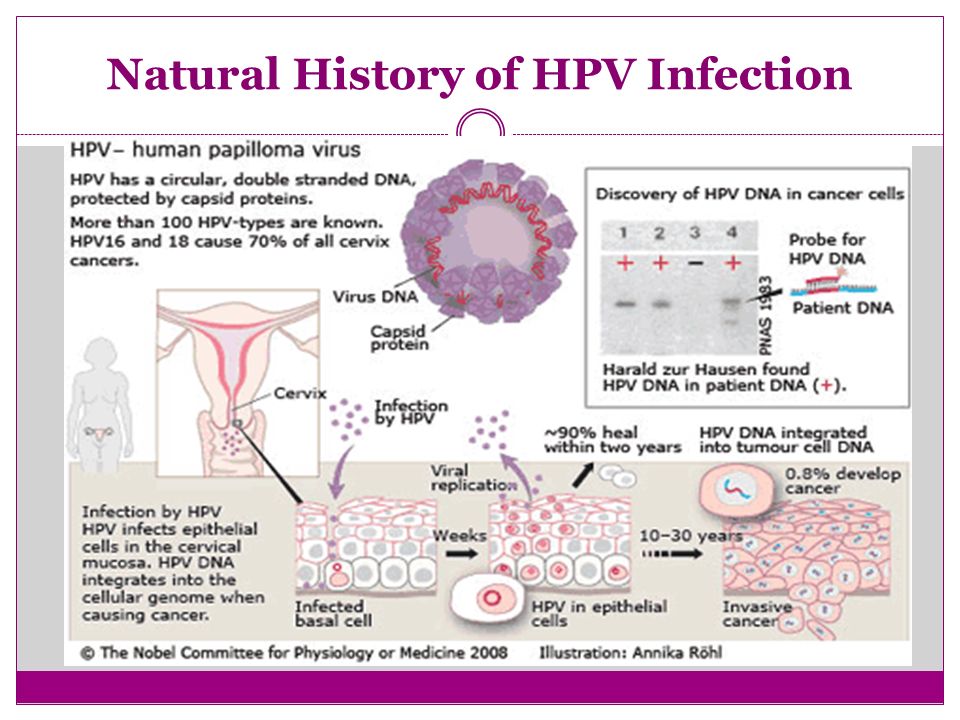
 The latter is a deadly sign of laryngeal papillomatosis in children, because it can cause suffocation.
The latter is a deadly sign of laryngeal papillomatosis in children, because it can cause suffocation.